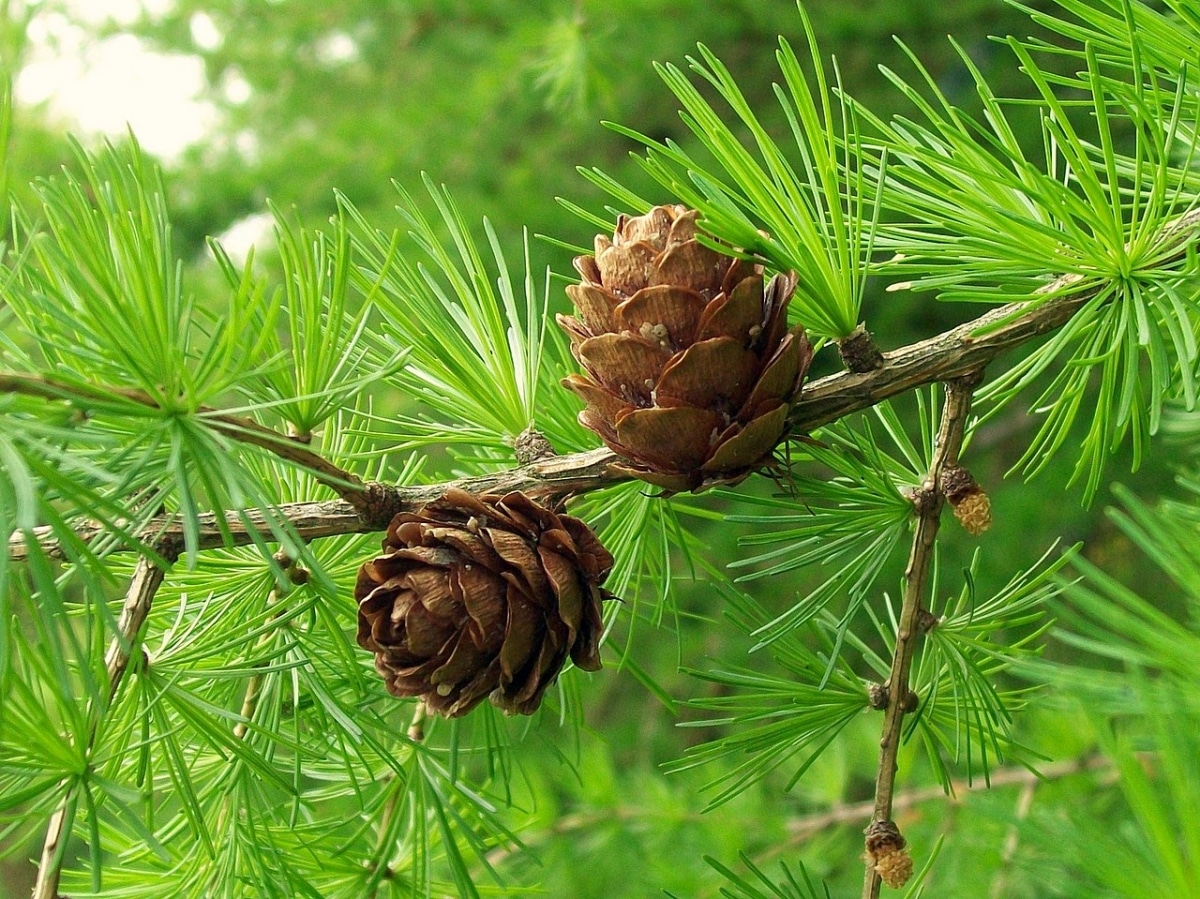
Image – Wikimedia/AnemoneProjectors
Trees adapt as best they can to the environment in which they live, which is why there are species that grow better in warm climates, and there are others that, on the other hand, do so in temperate or even cold climates. One of the latter is Larix decidua, which we find in the highest mountains in Europe.
It lives in places where temperatures are very low in winter, so to survive it drops its leaves as soon as the cold arrives. In this way, you do not have to spend energy on feeding them, but can use it to simply stay alive.
How is he Larix decidua?

Image - Wikimedia / Dominicus Johannes Bergsma
El Larix decidua It is a deciduous conifer that can grow between 20 and 40 meters, rarely 50 meters. Its trunk is straight and over time it thickens to about 1-2 meters in diameter. During its youth it develops a conical cup, but as the years go by, it opens up a little. Its leaves are needles that measure 3 centimeters long, and are green, except in autumn when they turn yellow before falling.
As for the flowers, these are unisexual catkins: the female ones are red, and the male ones are yellow. They sprout after the leaves have begun to do so, in spring. And if all goes well, the cones will ripen, which will be ovoid in shape and measure a maximum of 6 centimeters long. The seeds take about 6 months to be ready to germinate, and even so, it is normal that, after falling to the ground, they take several months to do so.
Where is he from?
The European larch, as it is known in popular language, is a conifer that, as its common name indicates, is native to Europe. To be more exact, it is one of the few trees that live on the forest edge of the Alps.
It is a region where temperatures drop below -50ºC during winter, and where springs are also short and very mild.
What uses does the European larch have?
It is a plant that is given various uses. One of them is the decorative, since although it grows slowly, it has a very high ornamental value even when young. In addition, over the years it becomes an imposing tree, which casts a very pleasant shadow, and, as if that were not enough, in autumn its leaves turn yellow before they drop.
Another use is the one given to the resin that results from those more mature specimens. This, called larch turpentine, is often used once distilled in alcohol to make varnish.
What are the care of the Larix decidua?

Image - Flickr / Peter O'Connor aka anemoneprojectors
El Larix decidua It is a conifer that can be much more demanding than any other plant that we find in any nursery or garden store. This is so because, as we said, it lives in regions where temperatures plummet in winter, reaching values that can endanger the lives of the few species of plants and animals that live there, and where summers are also very short and tempered.
And of course, if we grow this plant, for example, in the south of Spain, we will realize that it is very difficult for it to survive (and not live), since the Andalusian summers are very hot -even torrid- and dry, and the winters are quite soft. Thus, We only recommend having a larch if:
- The climate is mild only in summer. The rest of the year should be cool, with snowy winters.
- You live on or near a mountain.
- Rainfall is frequent, and usually falls throughout the year.
- There is plenty of space in the garden. The roots are very long, so it is preferable that it be planted as far away as possible - at least ten meters - from anything that could spoil it, such as lightly paved floors, or pipes.
Based on this, the care that will be given will be the following:
It will be planted in the ground as soon as possible
The European larch is a tree that, as we have said, can become very large, so it is important that it be planted in the ground as soon as you have the opportunity. In this way, it will be able to grow at a more normal rate, without the space limitations of being in a pot.
The best time to do it it will be towards the end of winter, as soon as there is no frost. We will put it in a sunny or semi-shaded place, away from other large plants.
You have to water it often.
But without going to the extreme of keeping the soil always moist. It does not support drought, but excess water causes very serious damage to the roots.. Therefore, it is important to water it regularly, especially during the summer. And for this, rainwater will be used, or alternatively fresh water.
Multiply it by seeds in winter

Image – Wikimedia/Peter O'Connor
If we take into account that they will only germinate after being exposed to cold, it will be highly, highly recommended to sow them in winter, in a pot that we will put in a sunny place.
For this purpose, they will be planted in pots with specific soil for seedbeds (for sale here) and, after watering, it will be put outside.
Don't forget to pay it
Either with compost, organic mulch, or earthworm humus (for sale here) for instance, it is good to pay Larix decidua from spring until the end of the summer, since in this way we are going to make it stronger.
Have you heard of the Larix decidua?